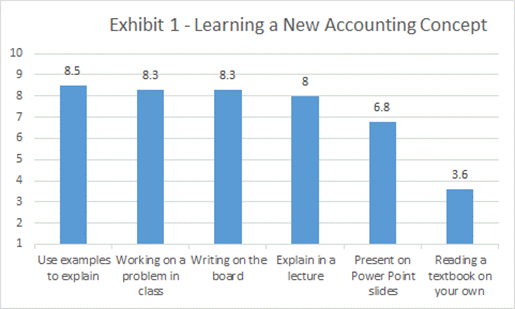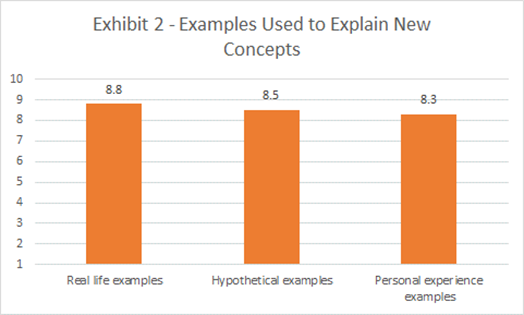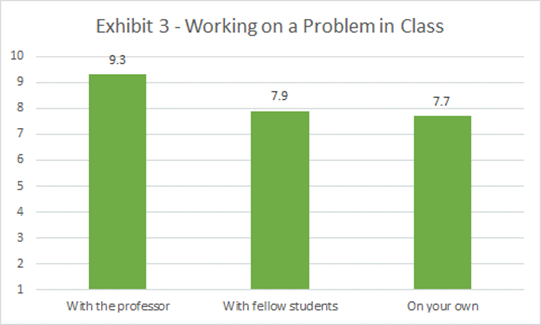How to Teach and Engage the iGeneration
Whether you call them the iGen, post-millennials, or Gen Z, shaping the talent of this generation is critical to the accounting and finance profession’s future.
By Stephen Scarpati, CPA, CLU, ChFC, and James Stavris, CPA, CGMA | Digital Exclusive - 2020

We all know the iPod, the iPhone, and the iPad, so it should come as no surprise that we now have the iGen, or iGeneration, to tag along with Apple’s string of generation-changing technologies. As new technologies propel the accounting and finance profession forward, so to do the generations of human talent ruling our business world. The iGen demographic has many names—think post-millennials, Generation Z, or just Gen Z. Regardless of the generation’s name, one aspect stands out—this generation is observably different in several ways. Those differences are apparent in many aspects of society today, but one aspect impacting the future of the accounting profession is education.
Most demographers and researchers typically cite 1995 to 2015 as birth years for the iGen. So, the current cohort of college students and future accounting graduates falls into the iGen. The challenge for accounting professors, given the technical nature of the courses, is figuring out how best to teach and engage iGen students. The same is true for accounting professionals who ultimately recruit and train iGen employees. Engaging this generation will be critical to the success and sustainability of all involved, which is why we sought to learn from iGeners themselves about how they feel they learn most effectively.
The Message From iGen
First, a survey of 218 college students, primarily sophomores in introductory financial accounting and managerial accounting courses, was conducted. For this survey, the students assumed that the class topic was a new accounting concept. Referencing generally used teaching tools and approaches, each student was asked to “rate the relative learning effectiveness of these tools and approaches for you personally.”
The results, as shown on Exhibit 1, indicate distinct preferences. At the low end, “reading a textbook on your own” was the least effective learning approach for a new accounting concept. With the emphatic wide margin by which reading a textbook is last, the iGen is telling us that this traditional method of education is not effective in helping them learn. This might be surprising to many educators who believe the accounting textbook is a focal point of accounting courses. (How many of us still have our accounting textbooks from college?) But despite what we might believe, iGeneration students prefer less emphasis on the textbook.
 Respondents Average Rating (1-10 scale)
Respondents Average Rating (1-10 scale)
At the top end, the most preferred method of learning is “using examples to explain” the new accounting concept. Making concepts “relatable” seems to be their clear priority. When asked what kinds of examples were most helpful, iGen students indicated that “real life examples” are most effective in helping them learn (see Exhibit 2).
 Respondents Average Rating (1-10 scale)
Respondents Average Rating (1-10 scale)
Another successful learning approach for a new accounting concept is “working on a problem in class.” The survey sought more specifics about this method. As shown in Exhibit 3, the results were more profound. iGen students are telling us that the most effective learning method for them is to work on the new accounting concept in class “with the professor.” This would indicate that iGen students want to be engaged learners but prefer being led through new concepts rather than mastering such concepts through independent study. Further, their preference for working on a problem in class “with fellow students” again shows a desire to collaborate with a team rather than working alone.
 Respondents Average Rating (1-10 scale)
Respondents Average Rating (1-10 scale)
A second survey of iGen students was conducted relative to student learning. In this study, 100 graduating College of Business seniors were interviewed about their college learning experience. That feedback was summarized into two categories: “What Works” and “What Doesn’t Work.” These conclusions were tested and affirmed with a subsequent panel of graduating seniors who were specifically questioned by College of Business faculty about the “What Works” and “What Doesn’t Work” summary (See Exhibit 4).
Exhibit 4
What Works
• Make it relevant to today
• Small group discussions
• Projects that get us doing things
• Make us talk and do the work
• Sense of humor
What Doesn’t Work
• Lecture for the full class
• Death by PowerPoint
• “You are on your own”
The results of the two different studies show consistencies. “Make it relevant to today” agrees with the “real life examples” preference of the first iGen survey. In the “What Works” findings, the graduating students are saying that they prefer to actively participate in the classroom, or learn by doing, which correlates to the first iGen survey’s finding of a preference to work on a problem in class with the professor or with fellow students. Universal to the rest of society, a sense of humor is always helpful.
At the opposite end, when students are passive in the classroom due to excessive lecture and/or use of PowerPoint slides, they feel it inhibits their learning. Also, students do not like being told “you are on your own.” This is like “reading a textbook on your own,” which was the least effective learning tool in the first study.
The Message for Accounting Professors
The feedback from these studies offers opportunities for accounting professors seeking to improve interaction with iGen students. These would include:
• Increase usage of real-life examples: Accounting has often been referred to as “the language of business.” Through actual experiences and examples, educators can readily make accounting concepts relatable to students.
• Actively engage students in the classroom: Accounting courses provide ample opportunities for students to actively answer questions, solve problems, apply concepts, analyze financial statements, and prepare reports in class. These active learning tools fit nicely with the preference of iGen students to “learn by doing.”
The Message for Accounting Professionals
Accounting professionals who recruit and train iGen employees may want to factor some of these findings into their onboarding and professional development programs. The above two suggestions transition to the business world:
• Increase usage of real-life examples: Building the connection between their work and real-life business objectives meets the iGen’s preference to “make it relevant.”
• Actively engage: Accounting professionals may want to take advantage of the iGen’s preference to “learn by doing” with more hands-on instruction. The feedback regarding less emphasis on textbooks would seem to apply to procedures manuals as well.
The Message for the Profession
For sure, not all accounting educators and professionals are comfortable with the iGen’s preferences. Anecdotally, many outside of the iGen feel that this generation wants to be coddled, which is a sense that reaches beyond education and training. Still, we must accept that they are the future. We believe the iGen’s preferences should be considered in the development of new approaches to learning and open dialogue—both in the classroom and in the workplace where the high academic and professional standards demanded by our profession must be sustained.
Stephen Scarpati, CPA, CLU, ChFC, and James Stavris, CPA, CGMA, are accounting professors at the Jack Welch College of Business & Technology at Sacred Heart University, Fairfield, Conn.